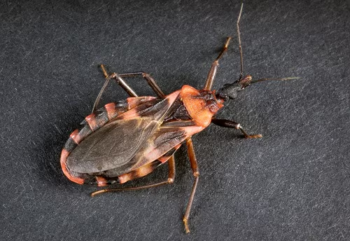The County plans to hand-spray a neighborhood in Grant Hill to kill invasive Aedes mosquitoes, after mosquitoes and larvae were found in an area near a person who became infected with the Zika virus while traveling outside the country.
Testing done at the San Diego County Public Health Laboratory confirmed that the person had the Zika virus, which was not acquired in the U.S. The person had recently visited a country where tropical, mosquito-borne illnesses including the Zika virus are active and developed symptoms after returning home.
Vector Control inspectors found Aedes mosquito larvae and adult mosquitoes near the person’s home. If Aedes mosquitoes bite a person with the Zika virus, they can then spread it to other people. To date, no Aedes mosquitoes have ever been found to be infected with the Zika virus in San Diego County or California. Vector Control plans to spray, weather permitting, in the area Monday — to kill mosquitoes that may carry and spread the virus.
“We can’t stress enough that it’s very important for people to inspect in and around their homes and dump out any standing water so these mosquitoes can’t breed.”
County Environmental Health Director Elise Rothschild.
The spraying area is bordered on the west by Dodson Street, the north by Island Avenue and the south by K Street. The eastern border lies mid-way between 30th street and 31st street.
Vector Control officials plan to go door-to-door and leave door-hanger notifications Saturday for residents in the spraying area. Officials will also teach residents how to prevent mosquitoes from breeding around their properties.

Unlike native San Diego County mosquitoes, Aedes species prefer to live around people — inside and outside homes and in backyards — and can breed in as little as a thimble-full of water. A female mosquito lays 100 to 300 eggs at a time and can potentially lay 1,000 to 3,000 eggs in its lifetime.
“We can’t stress enough that it’s very important for people to inspect in and around their homes and dump out any standing water so these mosquitoes can’t breed,” said County Environmental Health Director Elise Rothschild. “They can breed in the trays under flower pots, in holes in trees, toys in the yard that can collect sprinkler water — anything that can collect water.”
The National Centers for Disease Control and Prevention report that only about 20 percent of people who get infected with the Zika virus ever experience any illness. However, the Zika virus has been linked to a severe birth defect, microcephaly, a condition where babies’ heads and brains are smaller than normal.
The pesticide the County is spraying by hand, Pyrenone 25-5, is derived from chrysanthemums, is approved by the Environmental Protection Agency, and is being applied by trained County technicians. It poses low risks to people and pets and dissipates in roughly 20-30 minutes. However, the County is instructing residents in areas where spraying occurs that they can avoid or minimize their exposure to the pesticide by taking simple steps:
- Stay inside and bring pets indoors if possible
- Close doors and windows, and turn off fans that bring outdoor air inside the home
- Cover ornamental fishponds to avoid direct exposure
- Rinse fruits and vegetables from your garden with water before cooking or eating
- Wipe down or cover outdoor items such as toys and cover barbecue grills
- Beekeepers and those with insects kept outdoors are encouraged to shelter hives and habitats during treatments. Beekeepers are required to register their apiaries with the County’s Department of Agriculture, Weights and Measures to receive advance notice of when a pesticide that may affect bees is applied to blossoming plants in their areas.
- You may resume normal activities 30 minutes after the treatment
Vector Control will continue to conduct trapping for Aedes mosquitoes in the area and nearby locations for several weeks.
Two types of Aedes mosquitoes — the Aedes aegypti, yellow-fever mosquito and the Aedes albopictus, Asian tiger mosquito — were found in San Diego County for the first time in 2014 and 2015.
They are smaller than native mosquitoes, have distinctive black and white markings, are known as aggressive biters and — unlike our native mosquitoes that prefer to feed between dusk and dawn — like to bite and feed during daylight hours as well.
County officials reminded the public that they can protect themselves from Aedes and native mosquitoes by following the County’s “Prevent, Protect, Report” advice.
Prevent mosquito breeding
Dump out or remove any item inside or outside of homes that can hold water, such as plant saucers, rain gutters, buckets, garbage cans, toys, old tires, and wheelbarrows. Mosquito fish, available for free by contacting the Vector Control Program, may be used to control mosquito breeding in backyard water sources such as unused swimming pools, ponds, fountains and horse troughs.
Protect yourself from mosquito bites
Protect yourself from mosquito-borne illnesses by wearing long sleeves and pants or use repellent when outdoors. Use insect repellent that contains DEET, picaridin, oil of lemon eucalyptus, or IR3535. Make sure screens on windows and doors are in good condition and secured to keep insects out.
Report possible mosquito activity
Report if you are being bitten by mosquitoes during daylight hours, or if you find mosquitoes that match the description of Aedes mosquitoes by contacting the Vector Control Program at (858) 694-2888.
Information about the Zika virus, chikungunya, and dengue and can be found on the National Centers for Disease Control and Prevention’s website.
For more information about mosquito-borne illnesses virus, go to San Diego County’s “Fight the Bite” website. The County has also released the public service announcement below to promote mosquito prevention.





